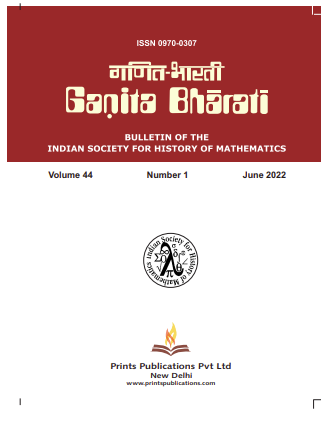Ganita Bharati
Published in Association with Bulletin of The Indian Society for History of Mathematics
Current Volume: 45 (2023 )
ISSN: 0970-0307
Periodicity: Half-Yearly
Month(s) of Publication: June & December
Subject: Mathematics
DOI: https://doi.org/10.32381/GB
Online Access is Free for Life Member
How did the All-purpose Parenthesis Come about in European Algebra?
By : Jens Høyrup
Page No: 45-75
Abstract
One of the characteristics that distinguishes modern algebra from al-Khwārizmī’s as well as abbacus algebra is the general “parenthesis function”. A parenthesis, it must be observed, is not a bracket but what is kept together possibly by a pair of round brackets. An algebraic parenthesis is an expression which as a whole can be operated upon or serve as argument for a function. Abbacus algebra made use of various “special-purpose” parentheses: most important of these being the numerator and the denominator of formal fractions, and composite radicands. Descartes adds a way to keep together a composite coefficient, but even this remains a special-purpose parenthesis. Oughtred, Newton and others start using a vinculum (a stroke above a composite expression), which could have served to define any kind of parenthesis, but actually only keeps together polynomials as factors. Neither their algebra nor any earlier algebra in the tradition had any need going beyond that. That need emerged in the second half of the 17th century, when algebra gave rise to infinitesimal analysis. Wallis, Leibniz and Johann Bernoulli needed and used the vinculum or the round brackets for new purposes, and thereby transformed them into general tools for parenthesis delimitation – probably without being aware that they had taken an important step. After 1750, even algebra proper adopted these new tools. A link to the emergence of the function as a mathematical category is sketched but not explored in depth.
Author
Jens Høyrup : Roskilde University, Section for Philosophy and Science Studies Max-Planck-Institut für Wissenschaftsgeschichte, Berlin, Germany.
DOI: https://doi.org/10.32381/GB.2023.45.1.3




